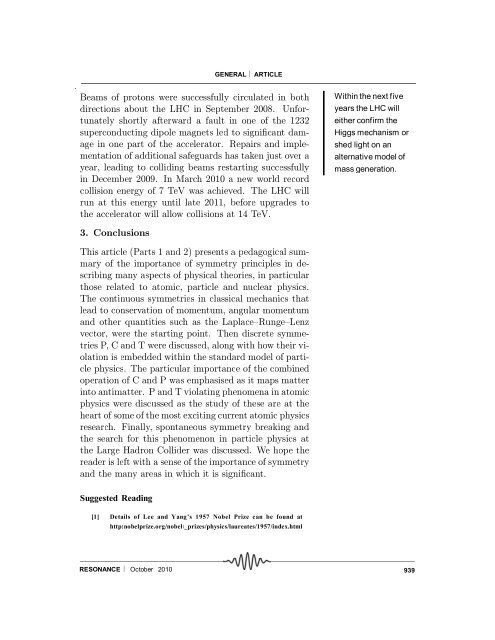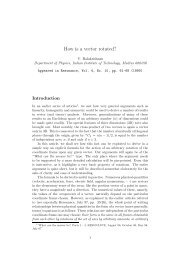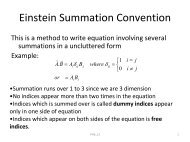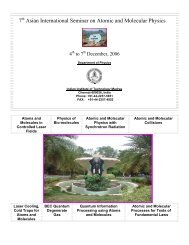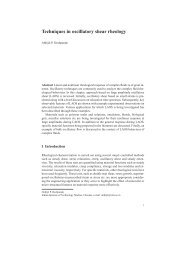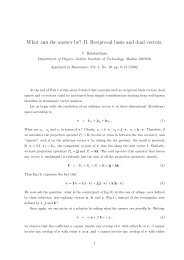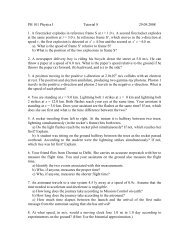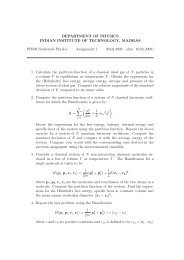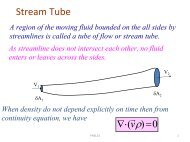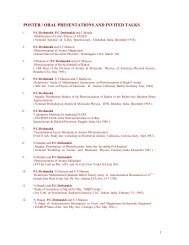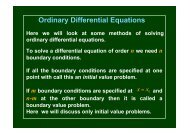Symmetry Principles and Conservation Laws in Atomic and ...
Symmetry Principles and Conservation Laws in Atomic and ...
Symmetry Principles and Conservation Laws in Atomic and ...
Create successful ePaper yourself
Turn your PDF publications into a flip-book with our unique Google optimized e-Paper software.
GENERAL ARTICLEBeams of protons were successfully circulated <strong>in</strong> bothdirections about the LHC <strong>in</strong> September 2008. Unfortunatelyshortly afterward a fault <strong>in</strong> one of the 1232superconduct<strong>in</strong>g dipole magnets led to signi¯cant damage<strong>in</strong> one part of the accelerator. Repairs <strong>and</strong> implementationof additional safeguards has taken just over ayear, lead<strong>in</strong>g to collid<strong>in</strong>g beams restart<strong>in</strong>g successfully<strong>in</strong> December 2009. In March 2010 a new world recordcollision energy of 7 TeV was achieved. The LHC willrun at this energy until late 2011, before upgrades tothe accelerator will allow collisions at 14 TeV.With<strong>in</strong> the next fiveyears the LHC willeither confirm theHiggs mechanism orshed light on analternative model ofmass generation.3. ConclusionsThis article (Parts 1 <strong>and</strong> 2) presents a pedagogical summaryof the importance of symmetry pr<strong>in</strong>ciples <strong>in</strong> describ<strong>in</strong>gmany aspects of physical theories, <strong>in</strong> particularthose related to atomic, particle <strong>and</strong> nuclear physics.The cont<strong>in</strong>uous symmetries <strong>in</strong> classical mechanics thatlead to conservation of momentum, angular momentum<strong>and</strong> other quantities such as the Laplace{Runge{Lenzvector, were the start<strong>in</strong>g po<strong>in</strong>t. Then discrete symmetriesP, C <strong>and</strong> T were discussed, along with how their violationis embedded with<strong>in</strong> the st<strong>and</strong>ard model of particlephysics. The particular importance of the comb<strong>in</strong>edoperation of C <strong>and</strong> P was emphasised as it maps matter<strong>in</strong>to antimatter. P <strong>and</strong> T violat<strong>in</strong>g phenomena <strong>in</strong> atomicphysics were discussed as the study of these are at theheart of some of the most excit<strong>in</strong>g current atomic physicsresearch. F<strong>in</strong>ally, spontaneous symmetry break<strong>in</strong>g <strong>and</strong>the search for this phenomenon <strong>in</strong> particle physics atthe Large Hadron Collider was discussed. We hope thereader is left with a sense of the importance of symmetry<strong>and</strong> the many areas <strong>in</strong> which it is signi¯cant.Suggested Read<strong>in</strong>g[1] Details of Lee <strong>and</strong> Yang’s 1957 Nobel Prize can be found athttp:nobelprize.org/nobel\_prizes/physics/laureates/1957/<strong>in</strong>dex.htmlRESONANCE October 2010939


